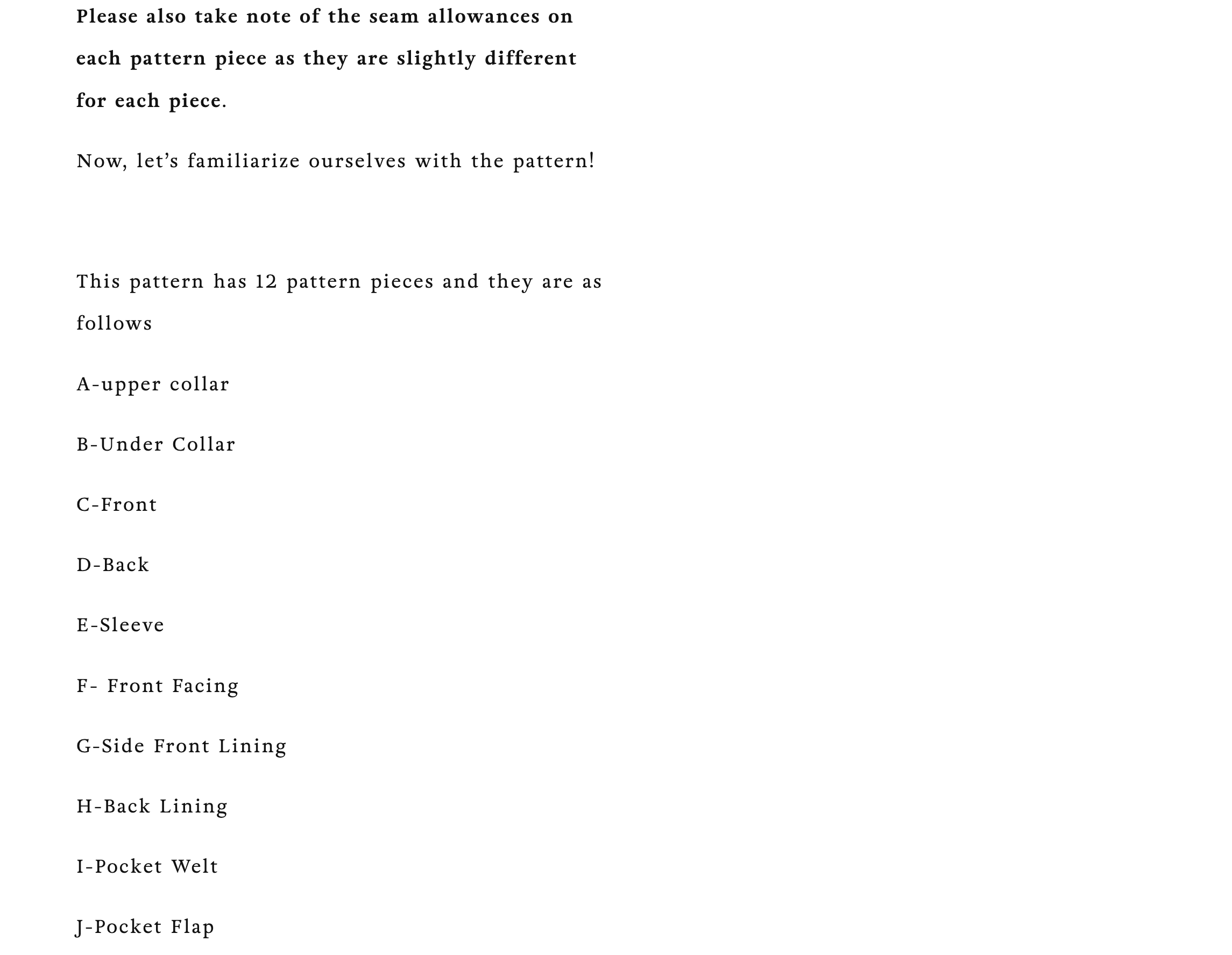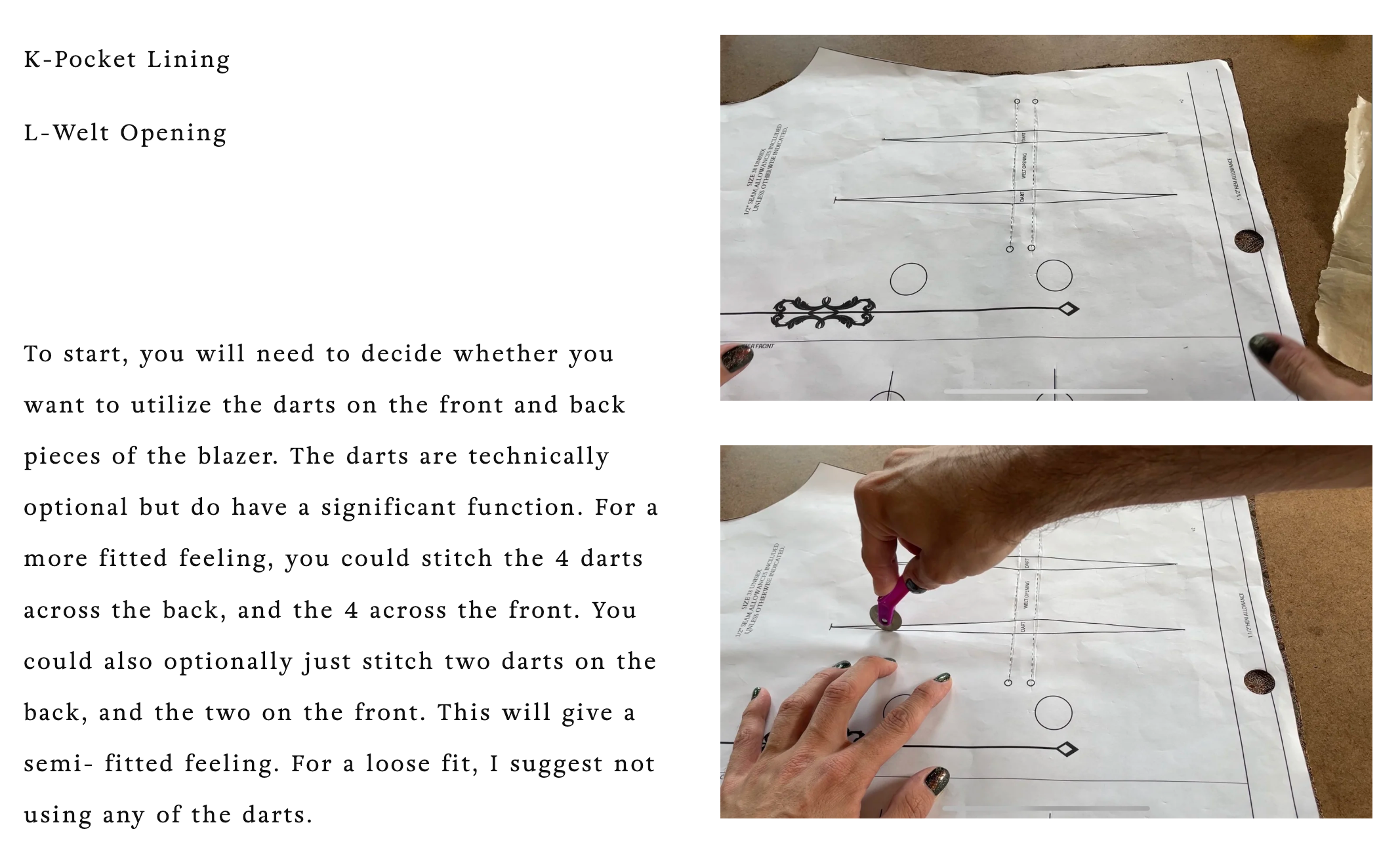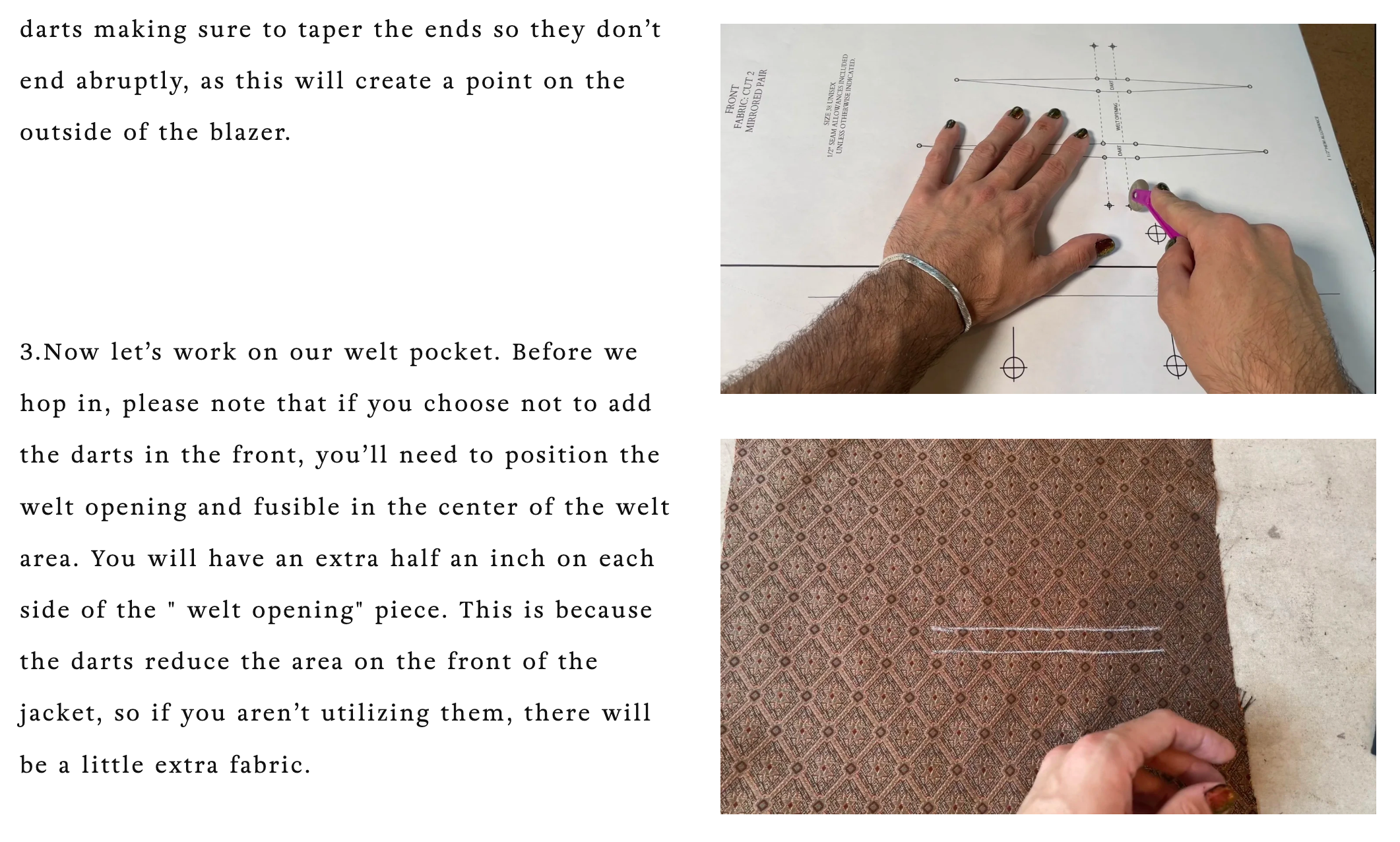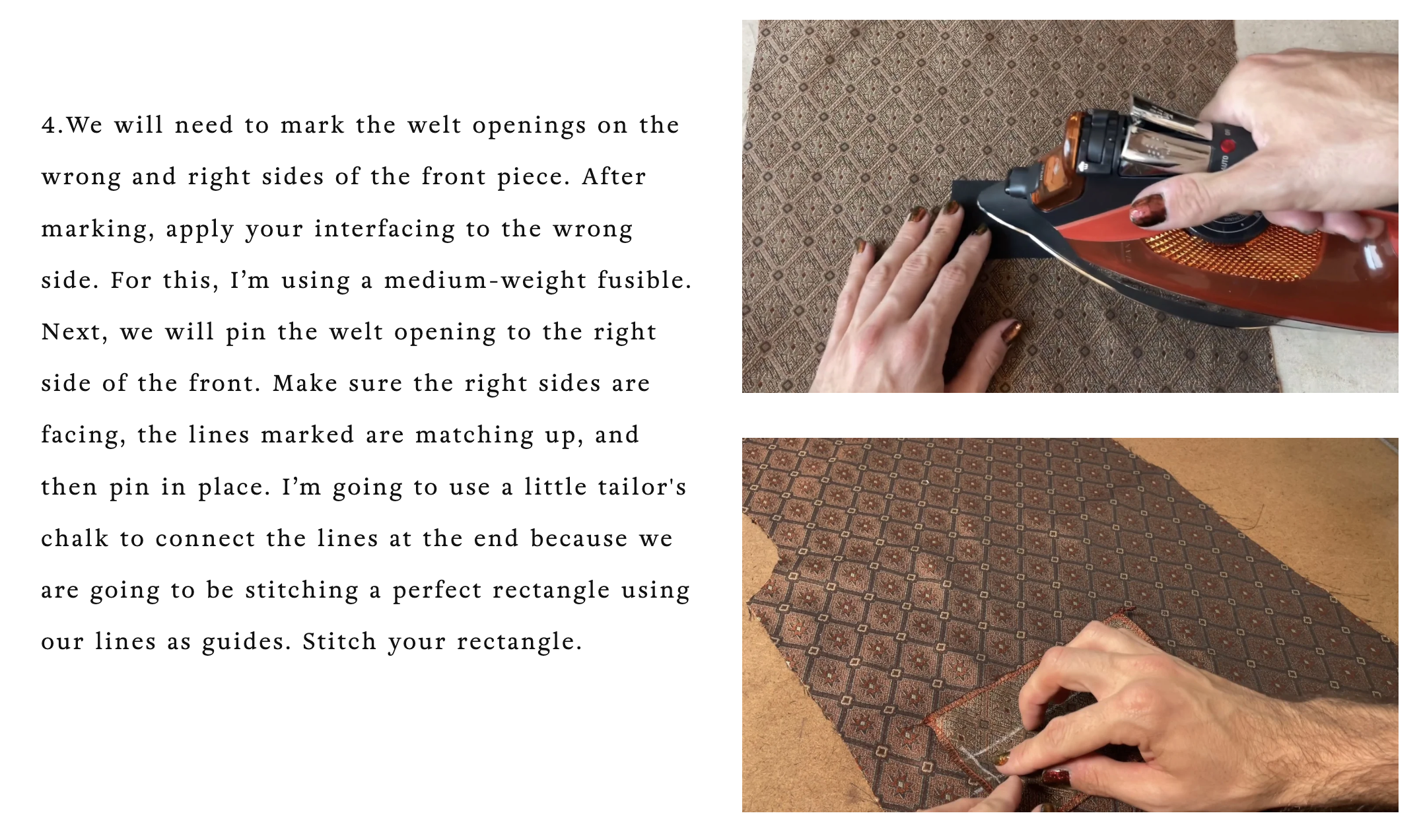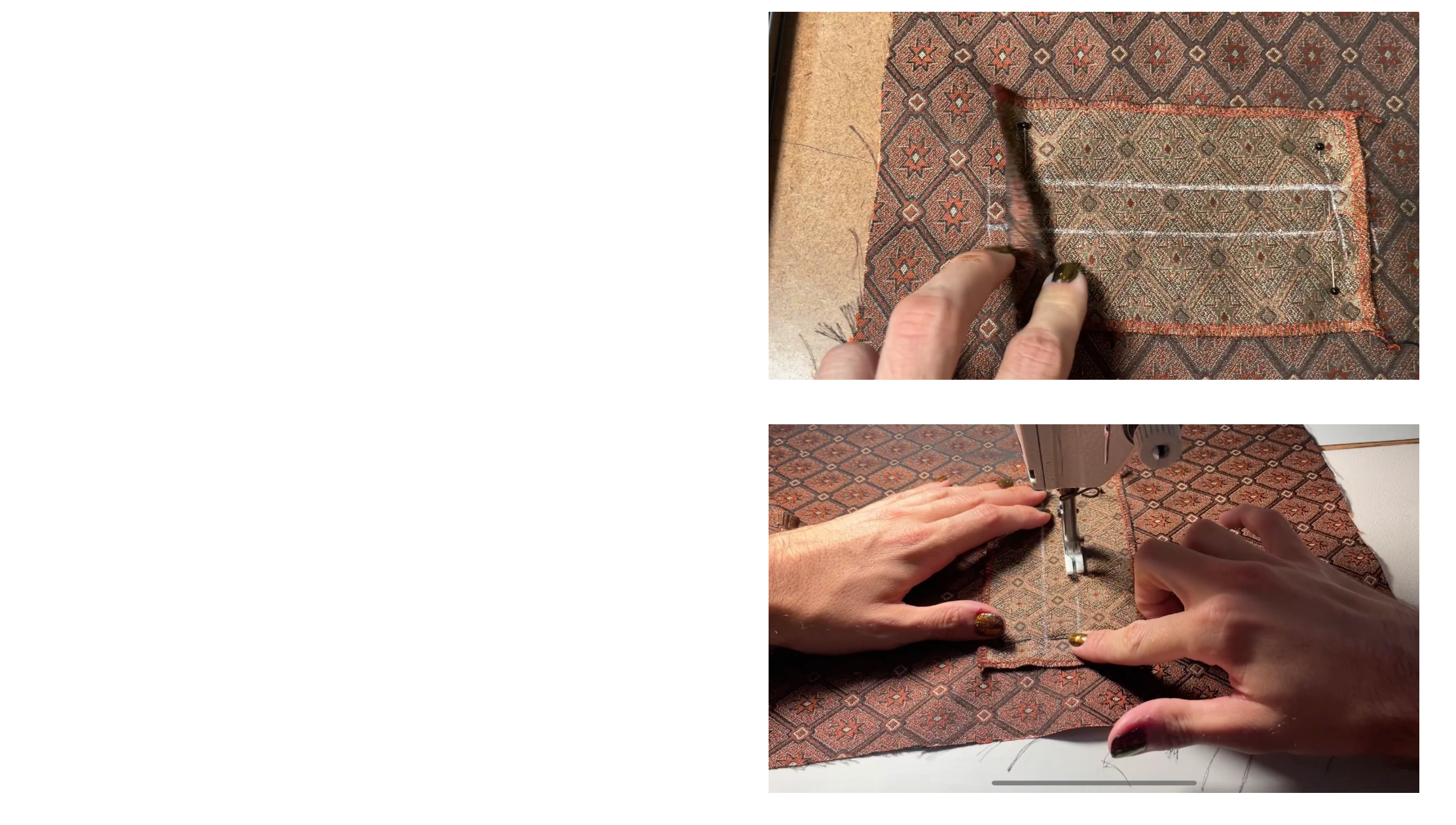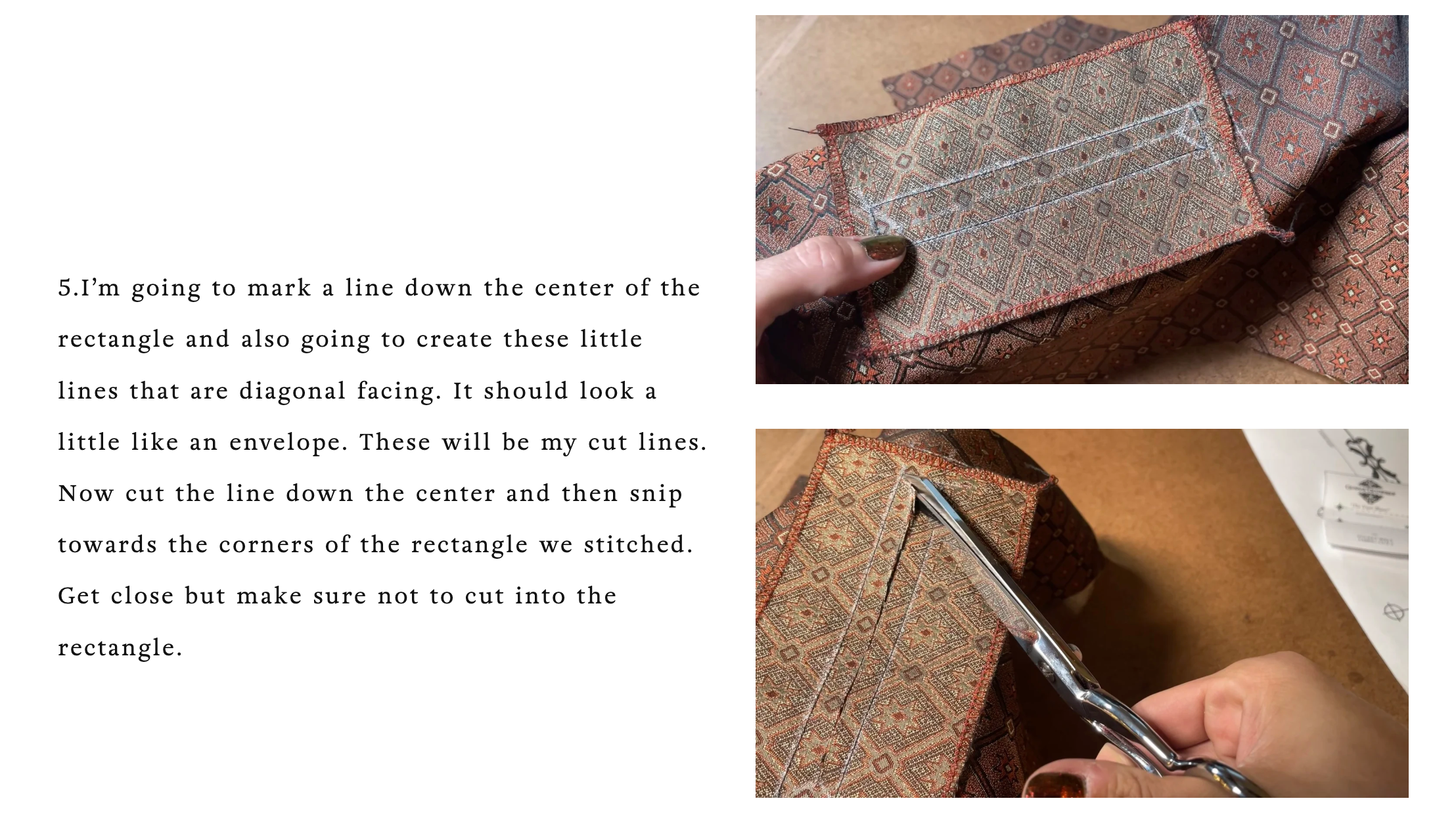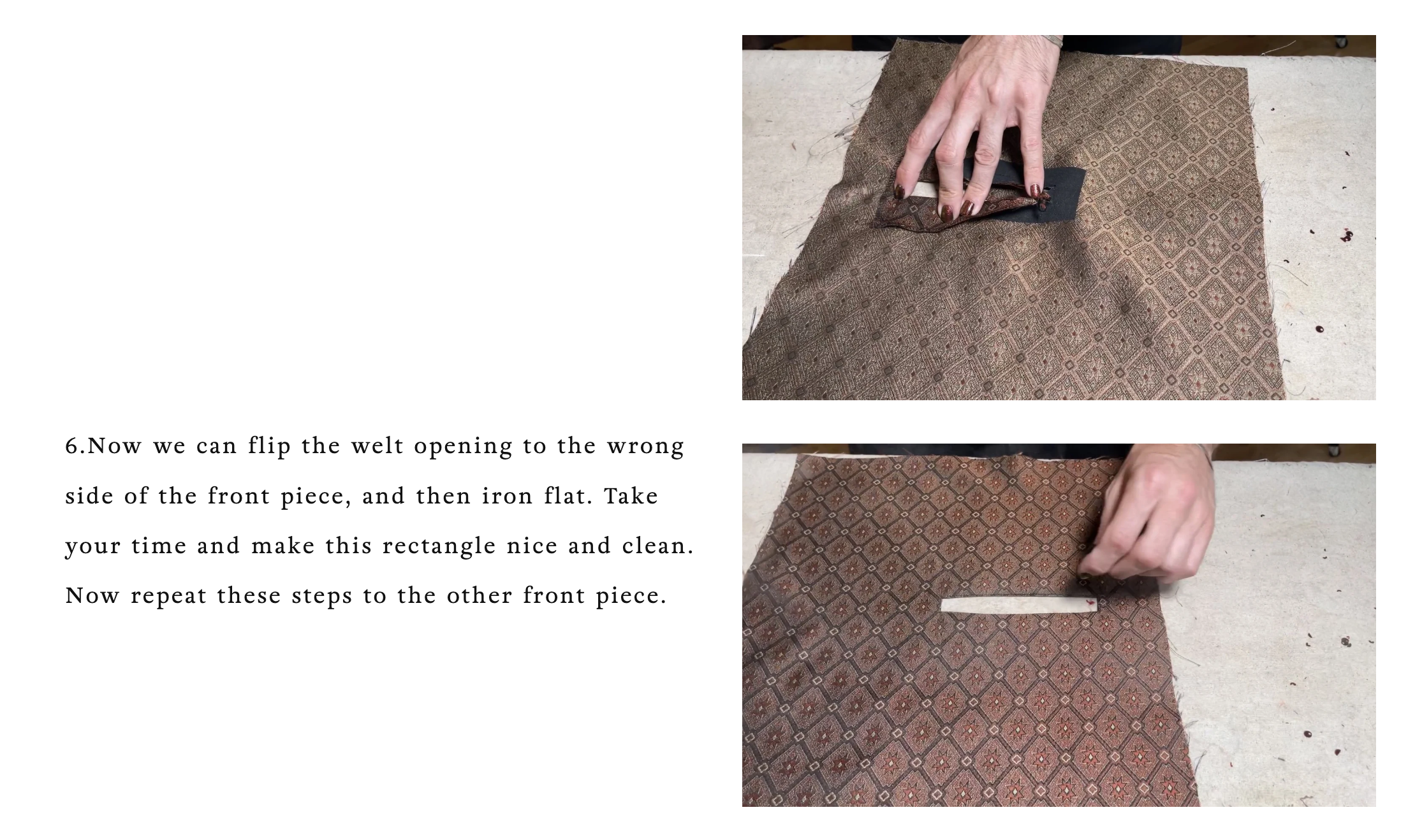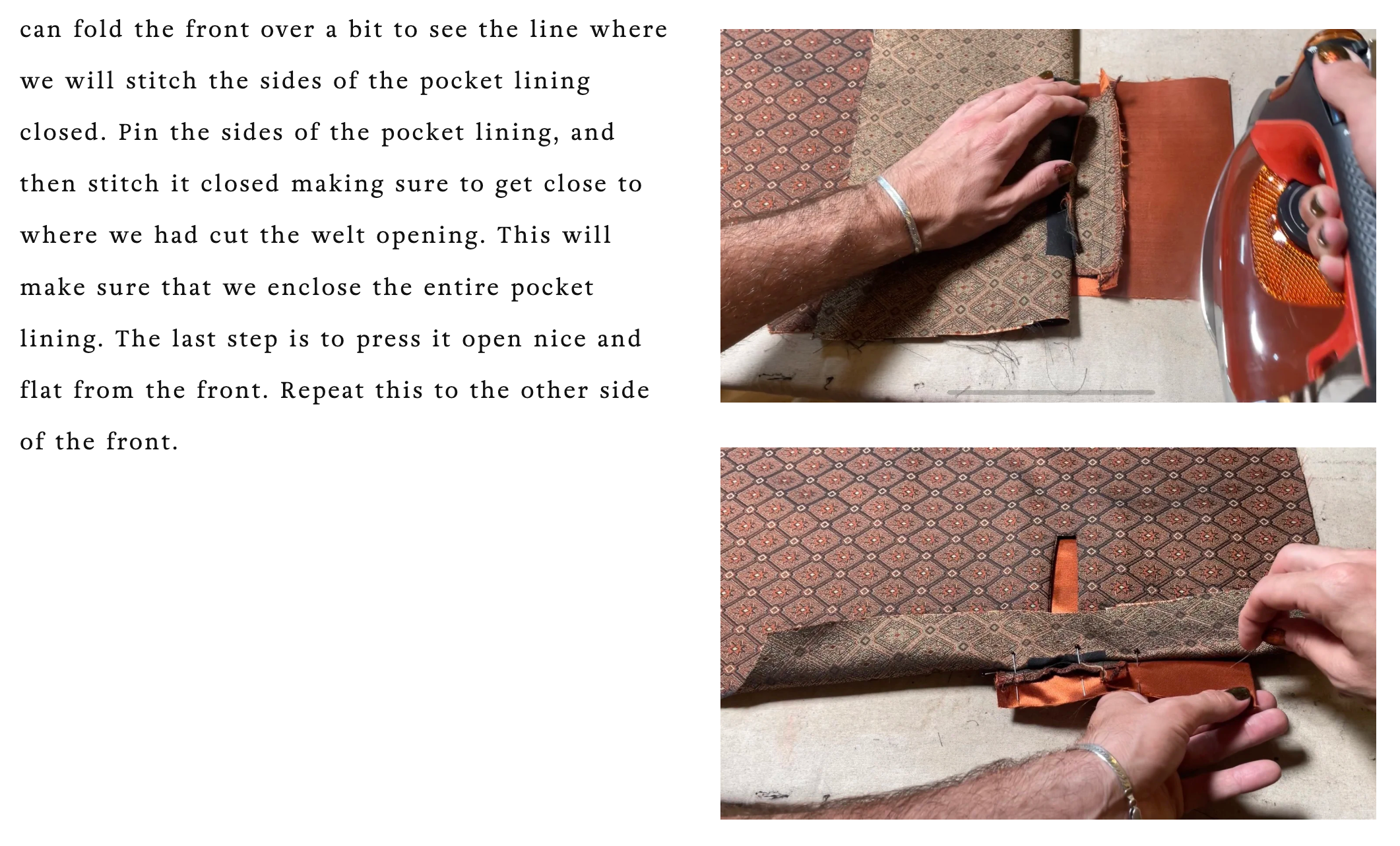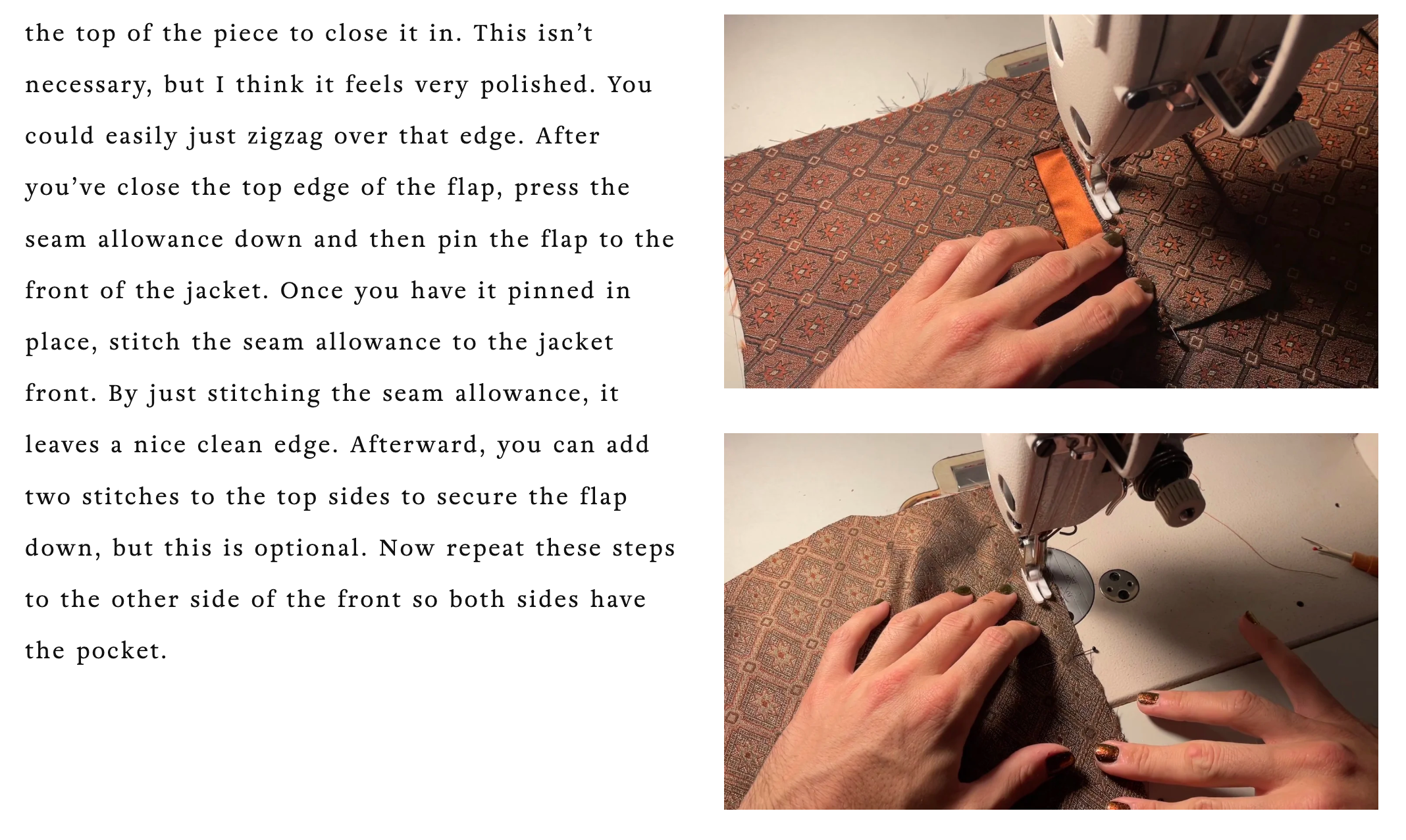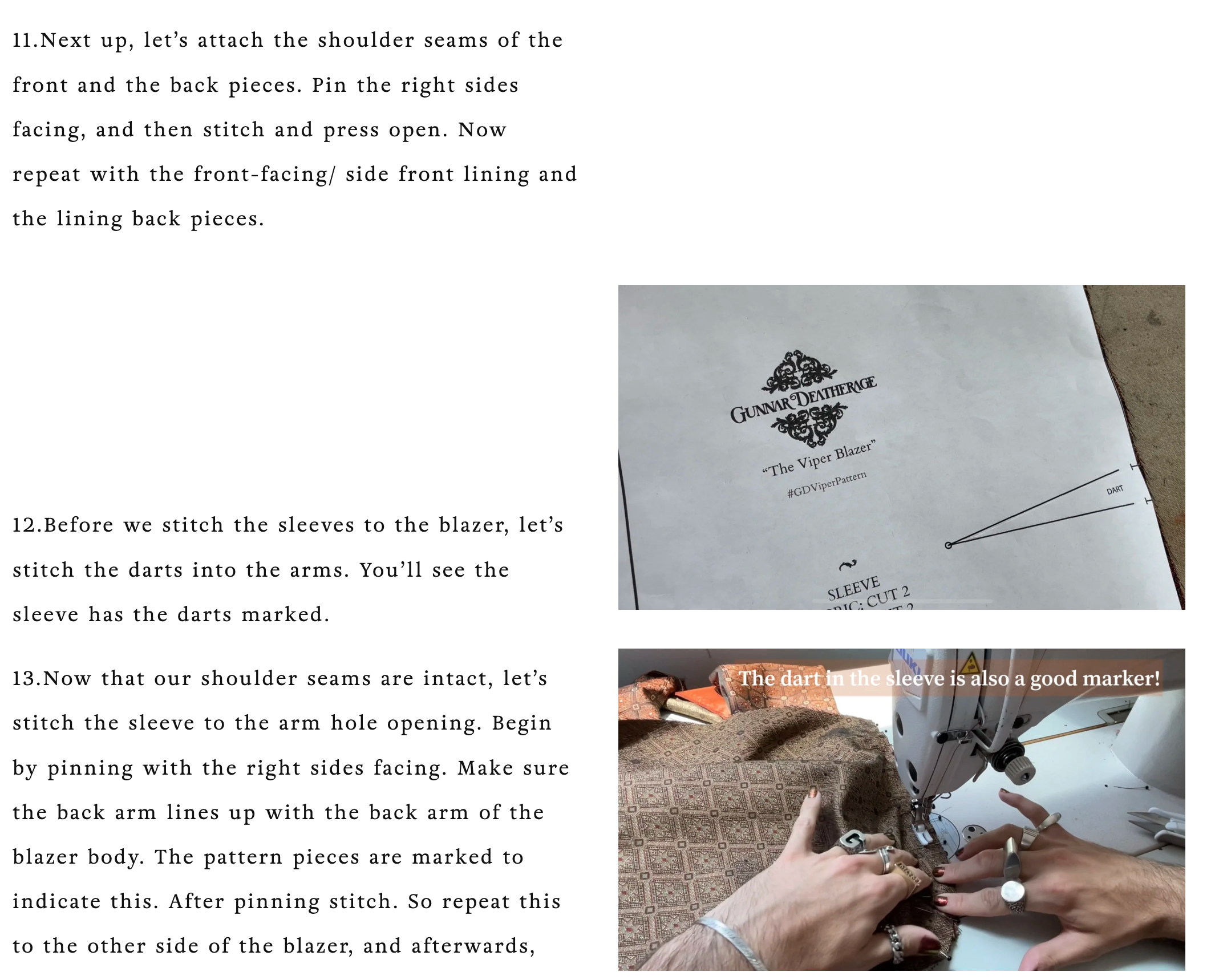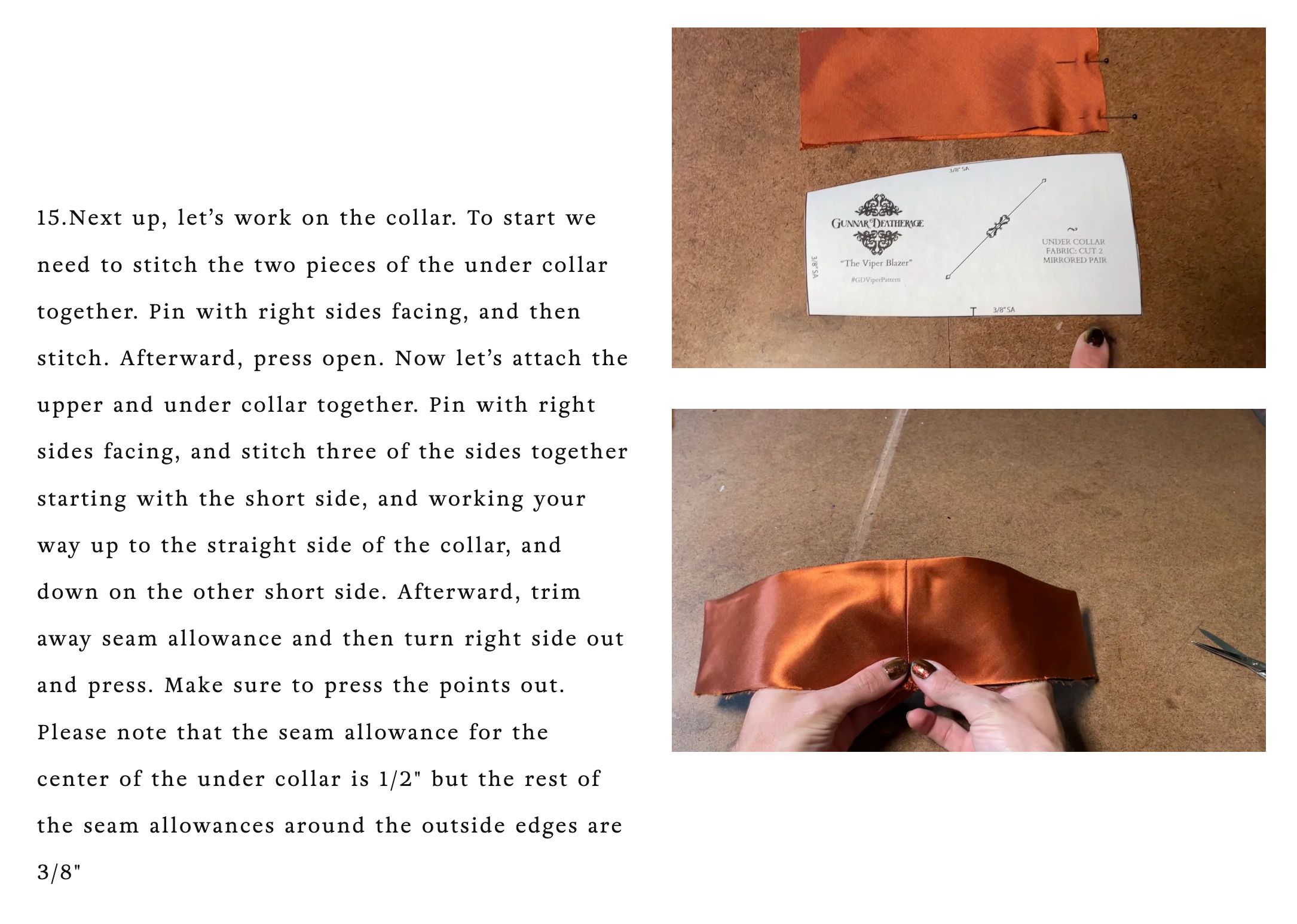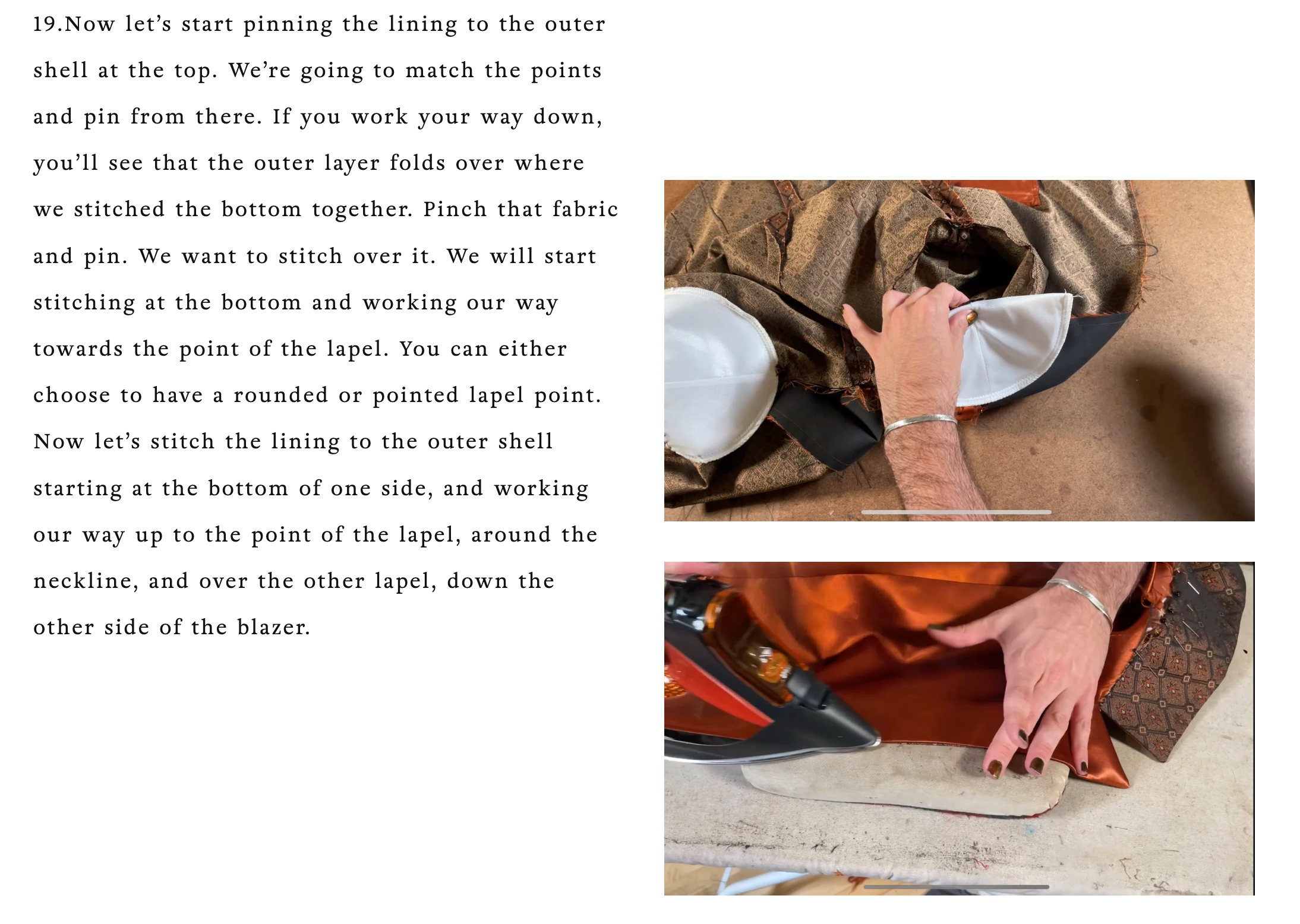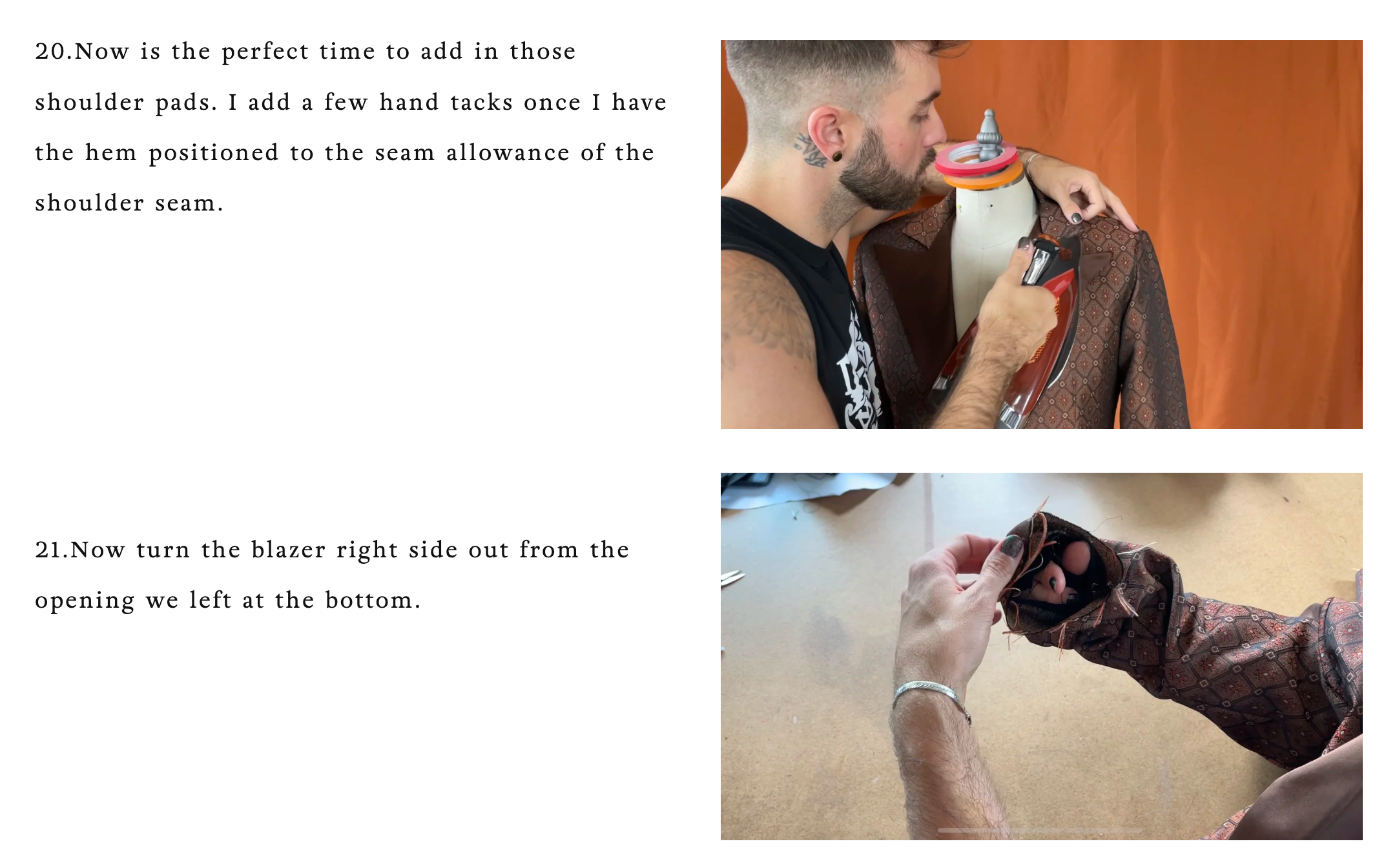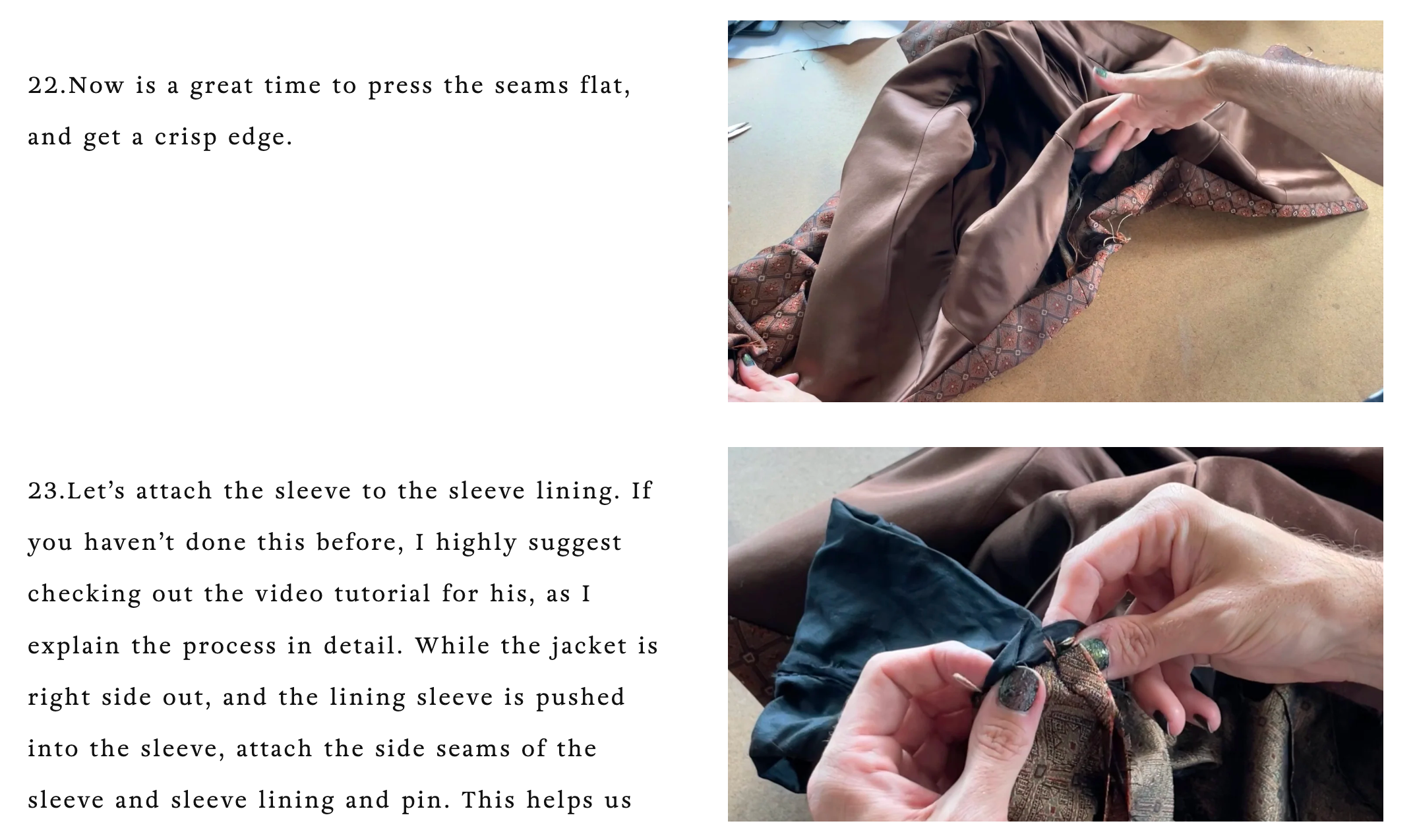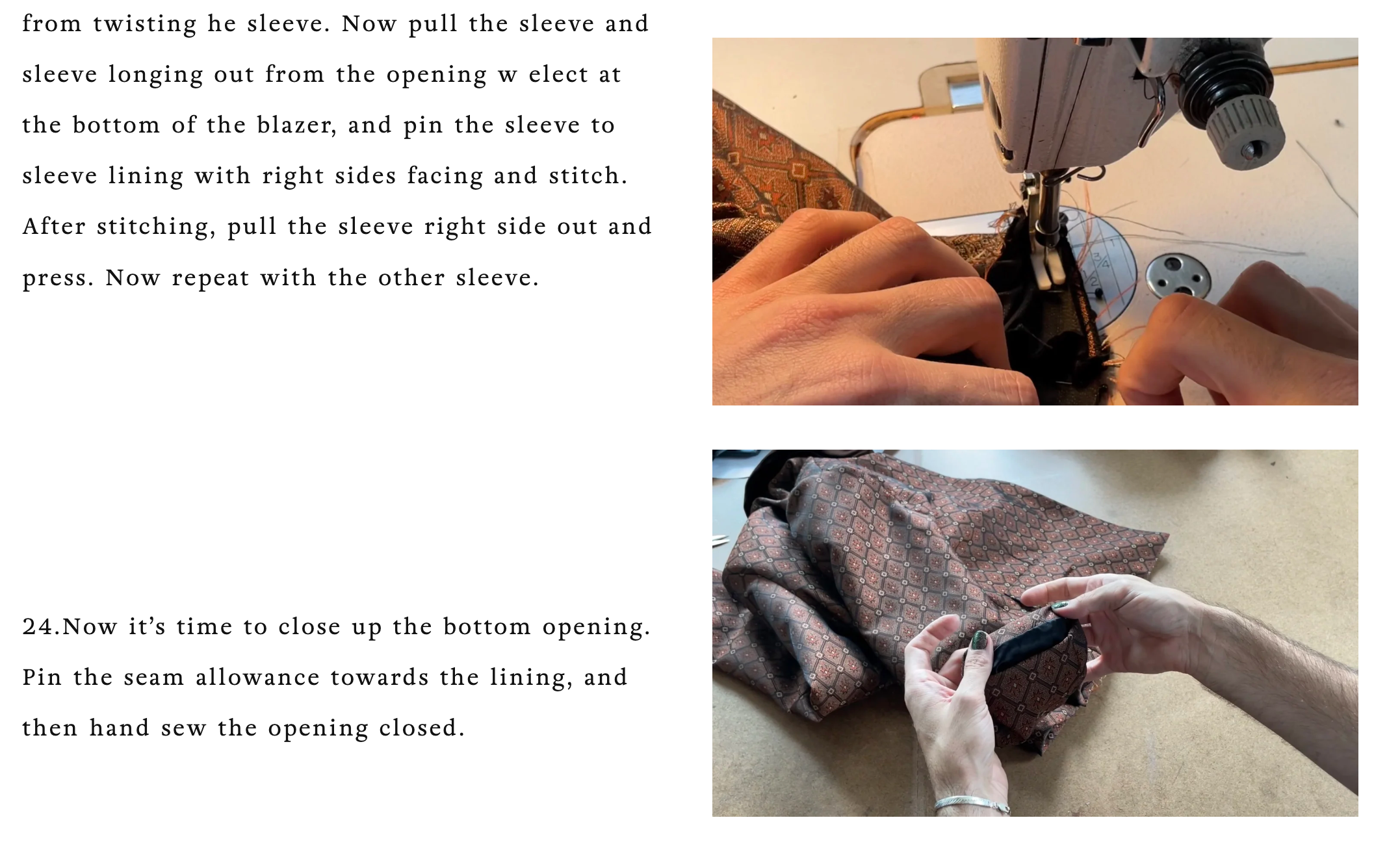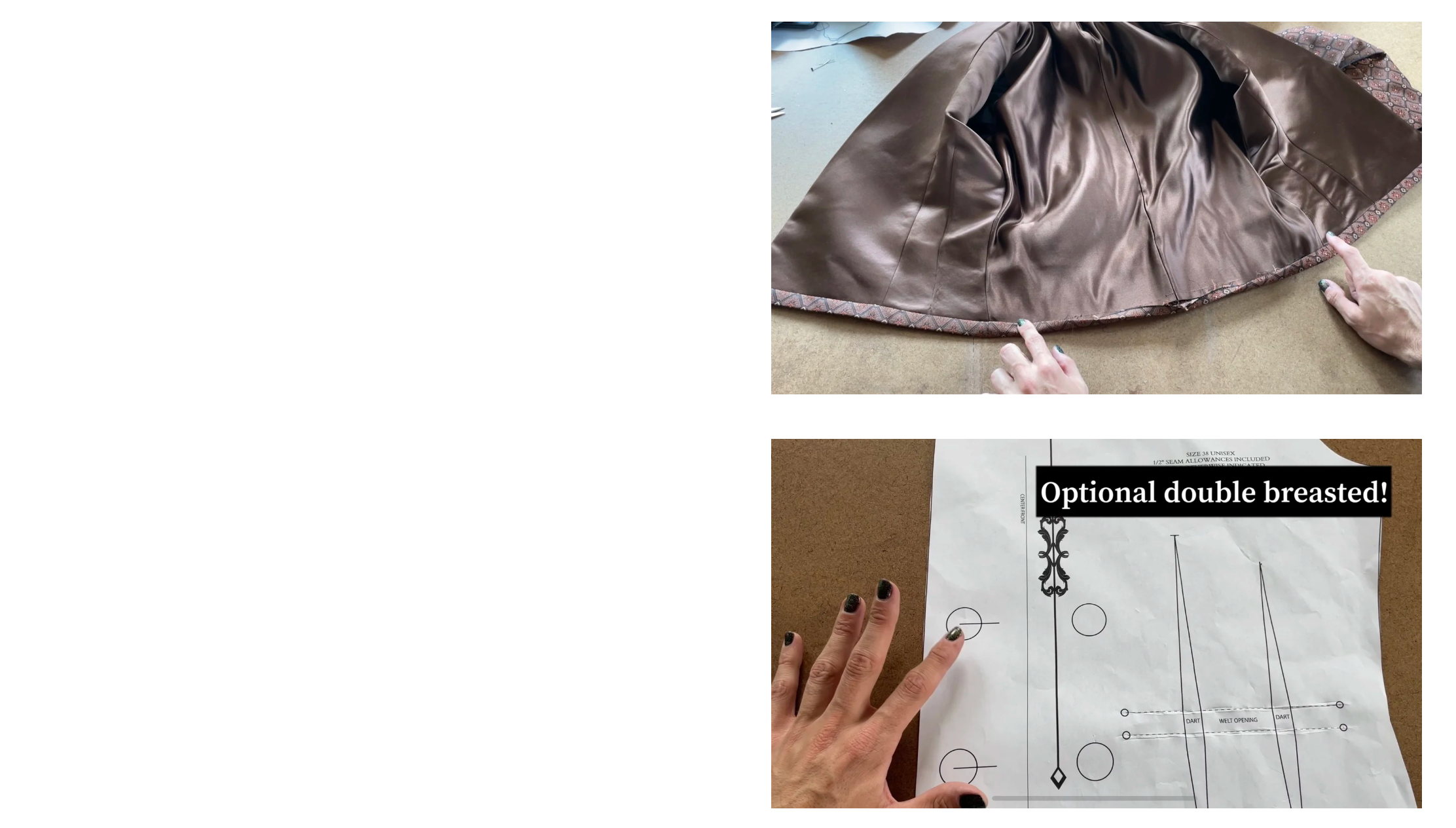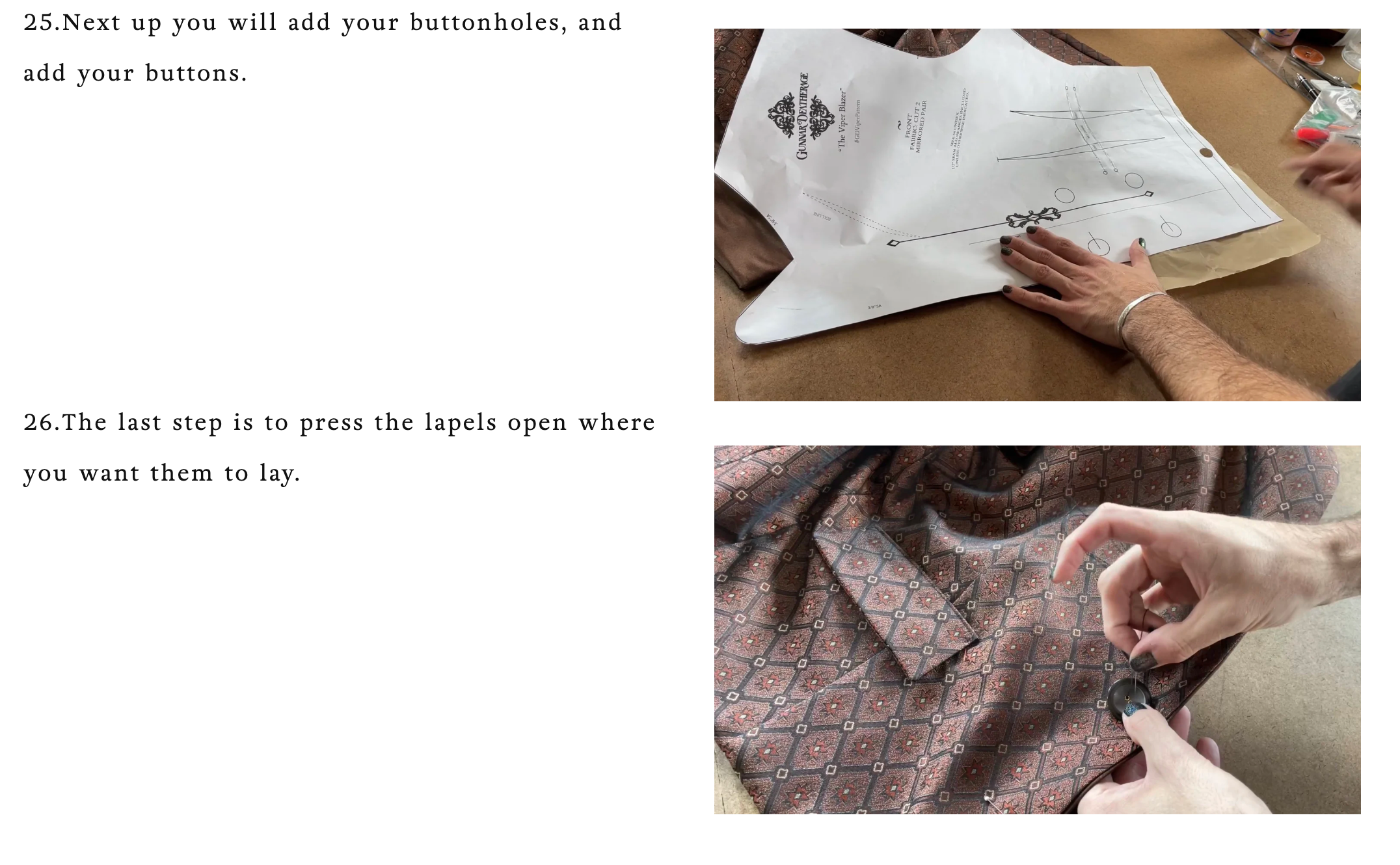The Viper Blazer Sewing Pattern Guide
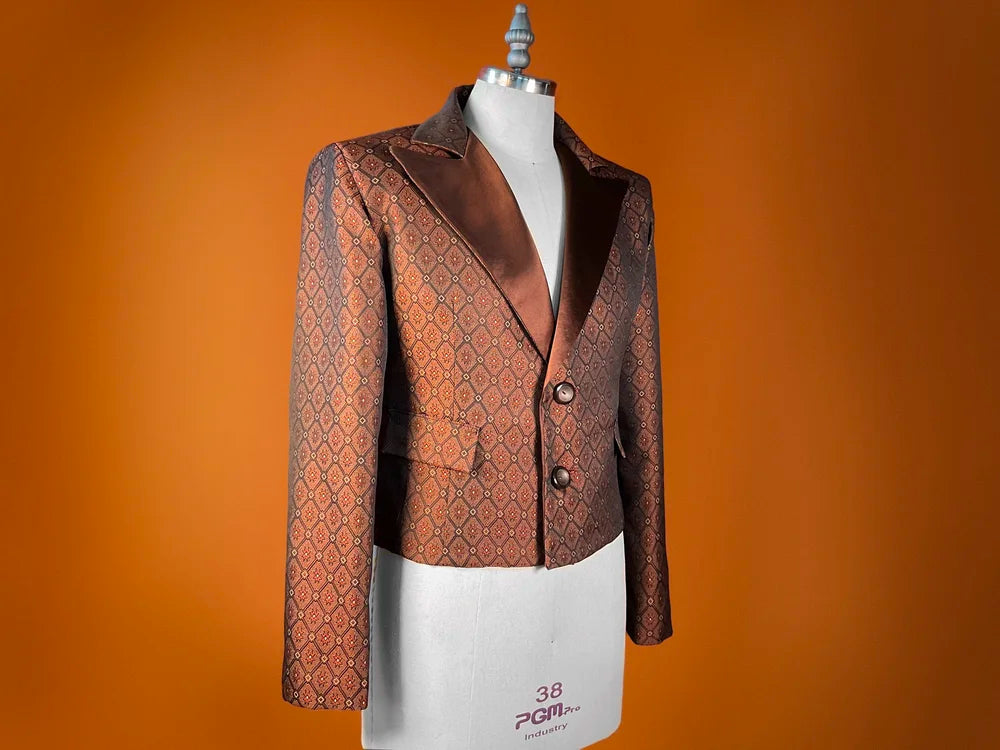
Hello, and welcome to the Viper Blazer! This blazer is beginner friendly for those wanting to venture into the world of tailoring. This blazer is cropped a bit shorter than a traditional blazer with an extended lapel that has a very 1970s feel. The lapel and length of the blazer could both be altered with a little tweaking but the pattern acts as a great base. The blazer is designed to be double-breasted but could also be made single-breasted, like the sample made in the instructions. If you intend on making yourself a double-breasted, I would go a size up, but if you like a single-breasted, stay at your current size. As always I HIGHLY suggest making a cotton Muslin mock-up! Blazers can be tricky and you want to make sure you have the right size for you.
The pattern will have a cutting layout, and a list of fabrics and notions needed. If you like a shoulder pad ( this blazer looks great with one) I suggest purchasing one that has a little more structure.
